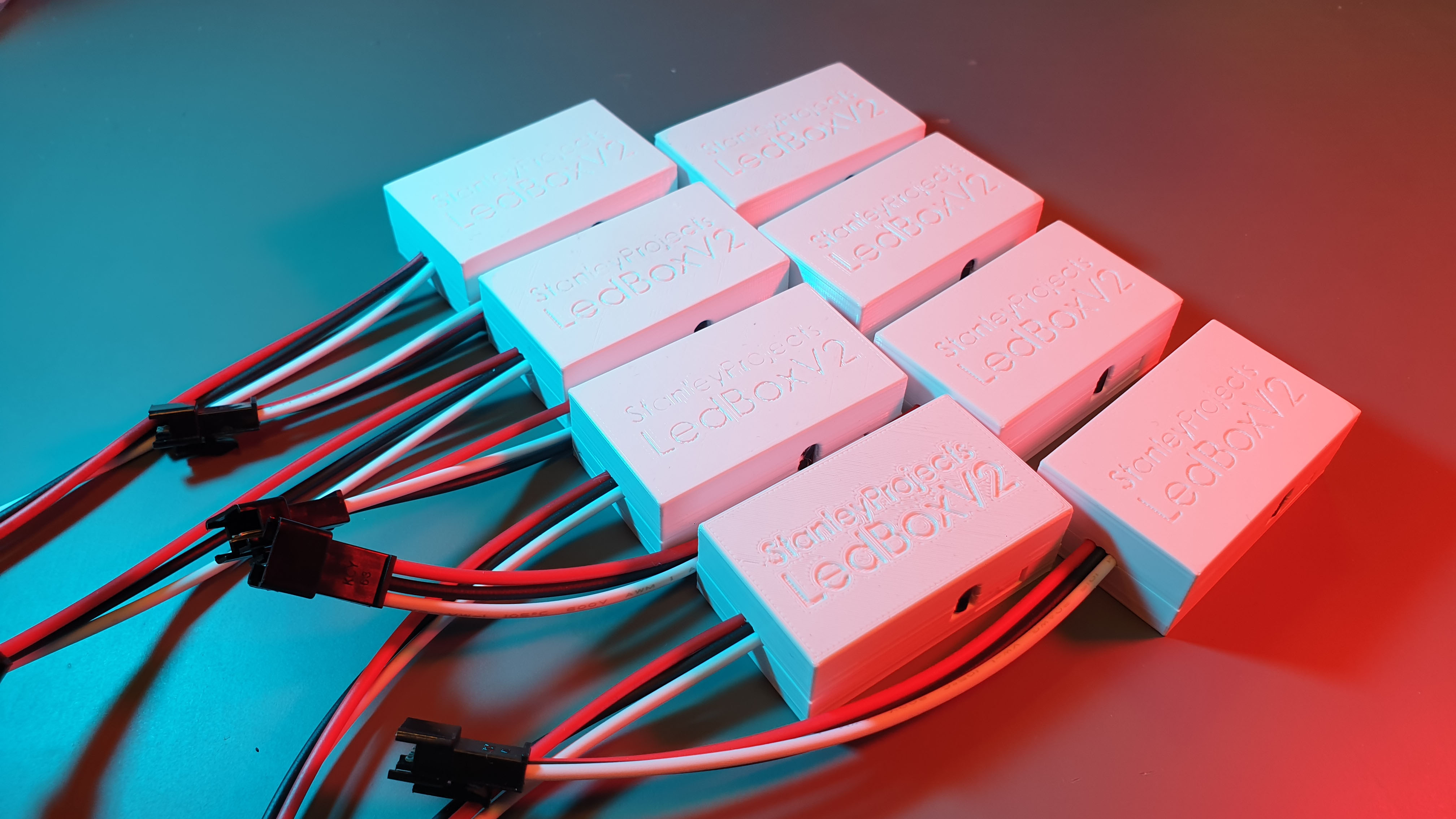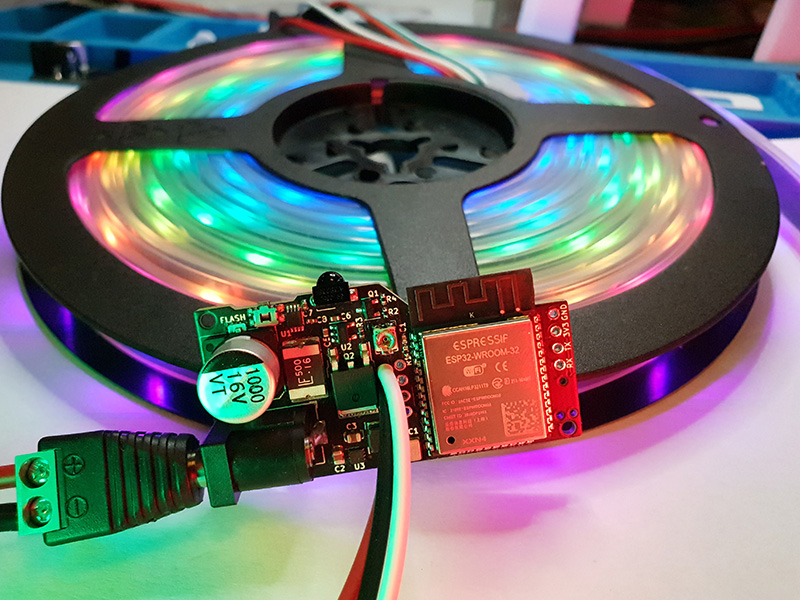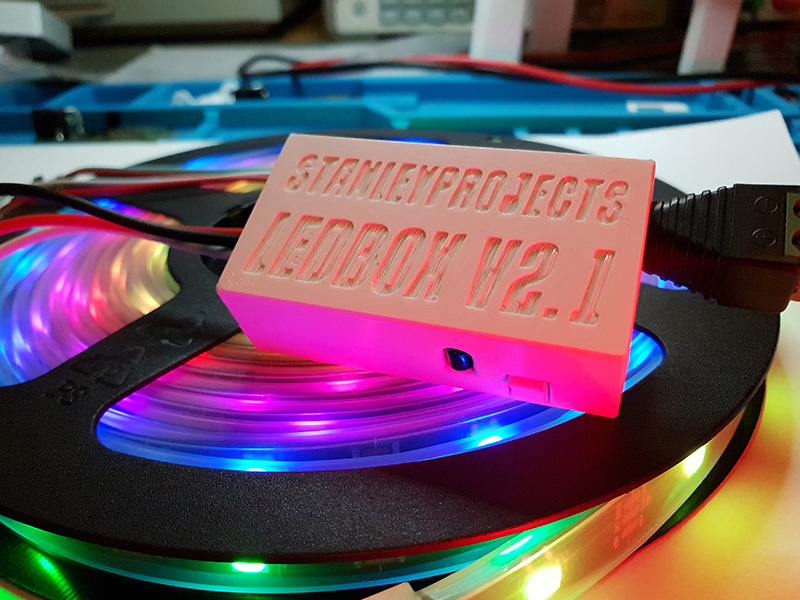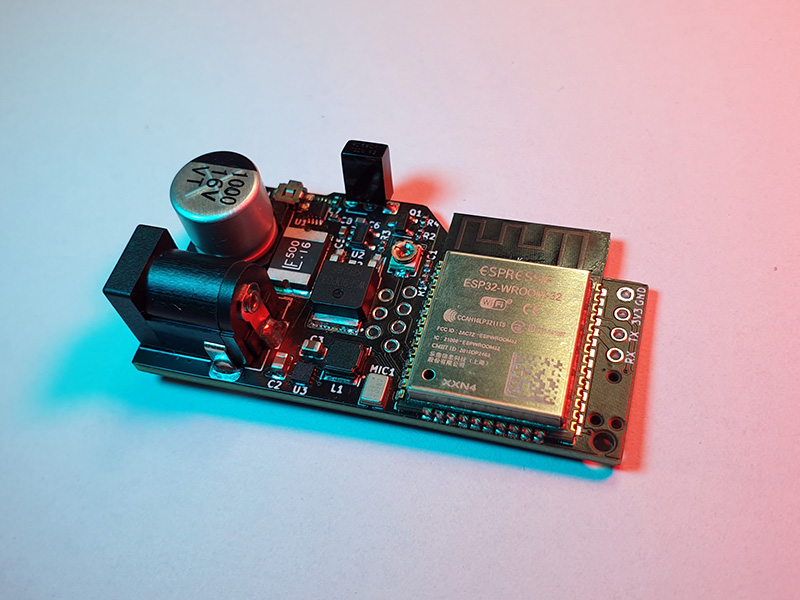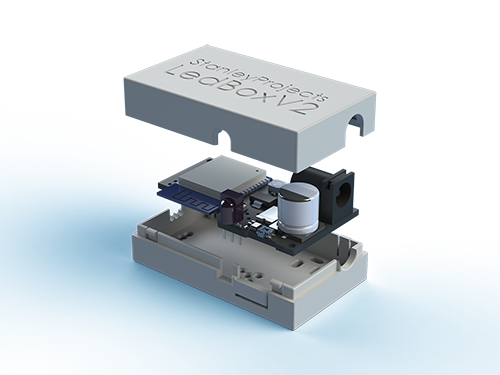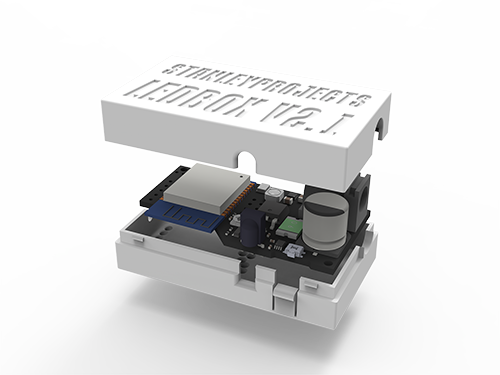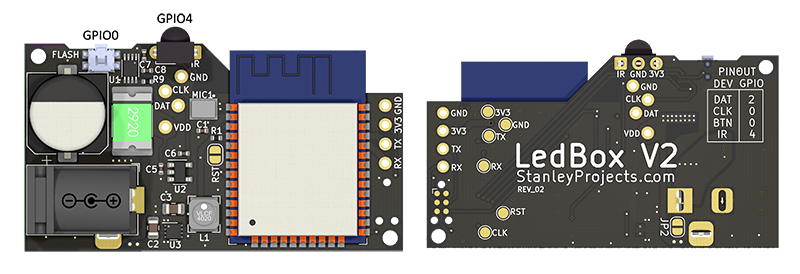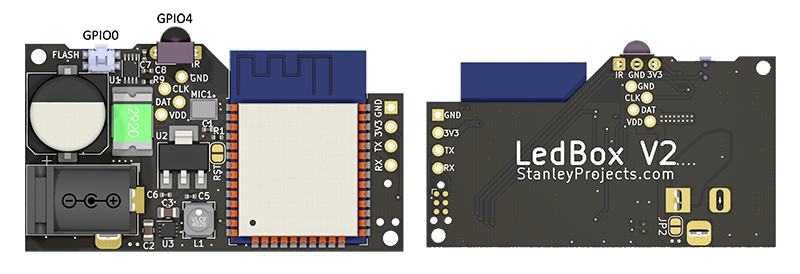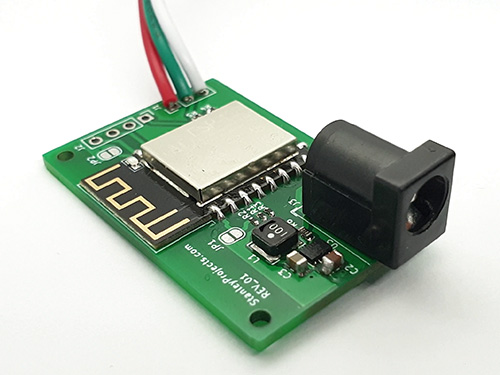LedBox V2 & V2.1
LedBox V2 / V2.1 is a fully contained, sound reactive, ESP32 based module for controlling 5-12V addressable LED strips (WS281x, SK6812, etc.), supporting both 3-(VDD,DAT,GND) and 4-(VDD,DAT,CLK,GND) wire configuration.
- Powered by ESP32
- Fully compatible with WLED
- Sound-reactive (MEMS microphone)
- Supports 5V-12V LED strips
- 38kHz IR Receiver
- Button control
- 10A resettable fuse PPTC
- 1000µF buffer capacitor
- Logic-level converter
- Impedance matching resistor
- MOSFET (only V2.1)
- Variable impedance matching (only V2.1)
- Extra GPIOs (only V2.1)
The module (V2 & V2.1) has a dedicated step-down converter, which allows to seamlessly use both 5V and 12V strips (input voltage has to match strip's voltage). It also contains a digital MEMS microphone, side button, 32kHz IR receiver, 10A safety resettable fuse, 1000µF buffer capacitor, 3.3V/5V level converter for both Data and Clock lines, together with an impedance matching resistor. These features ensure maximum functionality, safety, and led strip compatibility, all in a small 3D printable enclosure.
LedBox V2.1 has these additional features:
- MOSFET that automatically disconnects the LED strip power when in standby
- Potentiometer for precise impedance matching
- 3 unallocated GPIO pins for possible expansion
The project is open-source, and resources are free to download using links on the right side of the page. The fully assembled version can be purchased on Tindie.com and comes with the latest sound-reactive firmware.
Specification
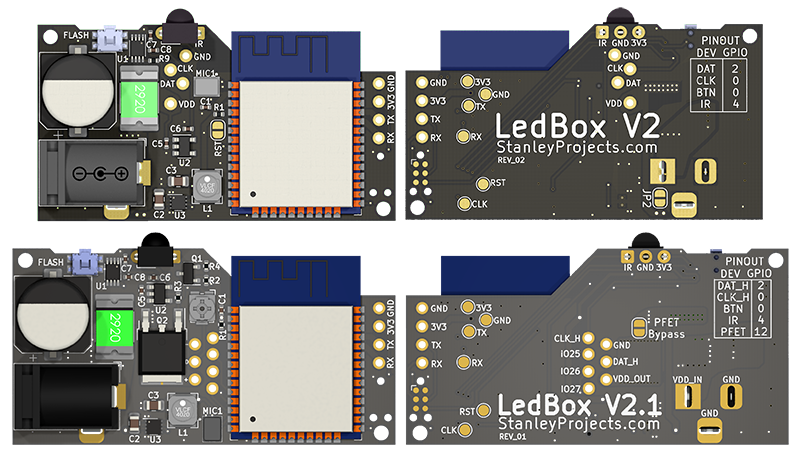
LedBox comes with a standard 3-wire JST SM connector soldered on VDD, DAT, and GND, for easy connection of 3-pin addressable LED strips. To use 4-wire strips, additional CLK pin can be easily soldered.
Both DAT and CLK are bi-directionally level-shifted from 3.3V to 5V, to meet recommended operating conditions for most LED strips. Additionally, DAT line has an impedance matching resistor in series to eliminate unwanted problems such as signal reflections and data corruption, when a high-frequency data signal travels through the cables of unknown electrical properties influences by length, gauge, and distance from power lines.
LedBox V2.1 has a 0-200Ω potentiometer instead, for a precise tuning. This makes it an ultimate solution for all cable configurations.
The 5.5x2.1mm (IEC 60130-10 Type A), center-positive DC barrel jack allows MAX 16V input voltage (VDD_IN). However, it is very important that the input voltage matches the voltage rating of your LED strip (usually 5V or 12V), since VDD_IN is electrically connected to VDD.
LedBox V2.1 has MOSFET that automatically disconnects VDD_IN from VDD (power input from power output), fully disconnecting the LED strip when in standby, to avoid quiescent current and improve safety.
Make sure that the power capabilities (max output current at a given voltage) of your power supply meets (or preferable exceeds) the expected power requirement of the LED strip. The on-board safety resettable fuse (PPTC) is rated for 10A. While this protects the LedBox in scenarios like short circuit on the strip side, currents of this magnitude should not be conducted through the module, since even the JST SM connector, that addressable LED strips use, is officially rated only for max 3A.
If you need to power large installations of strips with large current consumption, it is recommend to branch out the power line (VDD, GND) before the module using appropriately thicker cables, connect them directly to the strip (power injection), and break the power connection between LedBox and the strip.

When using long strips, you might experience a color shift towards the end, due to the voltage drop caused by strip's resistance.
This can be solved by injecting power to the strip repeatedly every few meters (e.g. every 5m for WS2812 or every 2.5m for WS2813, SK9822, SK6812).
However, if you own LedBox V2.1, keep in mind that the power injection bypasses the MOSFET, rendering it useless - the LED strip will be permanently connected, even in standby mode.
If you short the solder bridge labeled "PFET Bypass" on the back of the board, you can also back-power the LedBox from the strip side, as shown in the following picture.

Always make sure that you know and understand what you are doing! You are doing this at your own risk.
Firmware
Purchased module comes with preloaded sound-reactive WLED firmware and works out of the box. To perform OTA update, simply navigate to Config > Security & Updates > Manual OTA Update, click Choose File, select the firmware of your choice (e.g. LedBoxV2_SR_WLED_0.13.2.bin), and click Update.
The latest firmware is available at https://github.com/stanleyondrus/LedBoxV2
In case you brick your device, it is possible to flash it manually using an external serial-to-usb adapter such as the notoriously known red FT232RL FTDI board. The adapter needs to be set to use 3.3V (5V would destroy the chip), and connected as shown in the picture below.

Before flashing, the module needs to enter bootloader mode. This can be done by pressing the "FLASH" button while power-cycling the MCU. The easiest way to do this is to disconnect the ground or 3V3 line between the FTDI board and the module, and reconnect it back while holding the button.
If the chip does not boot after successful flashing, you might have to upload esp32 bootloader to a 0x00 memory address. See more details here.
